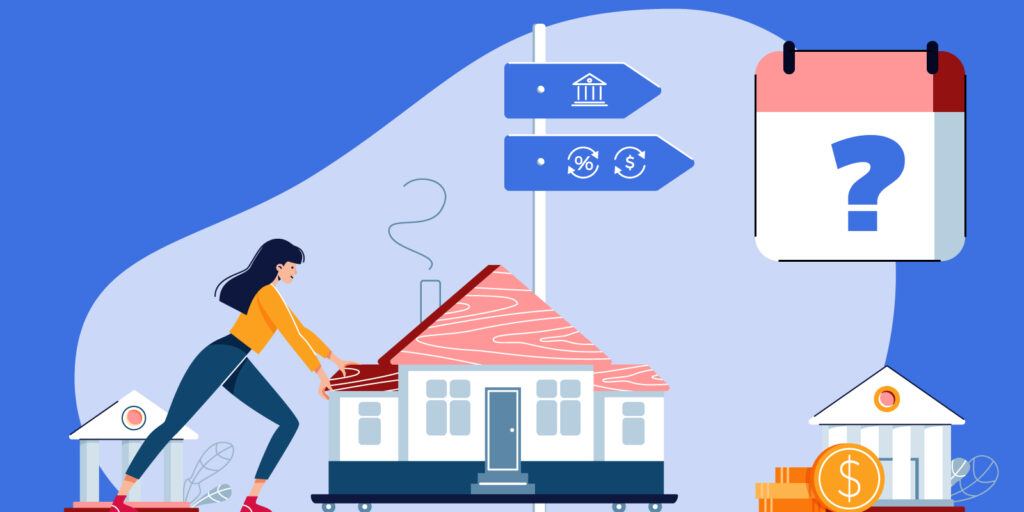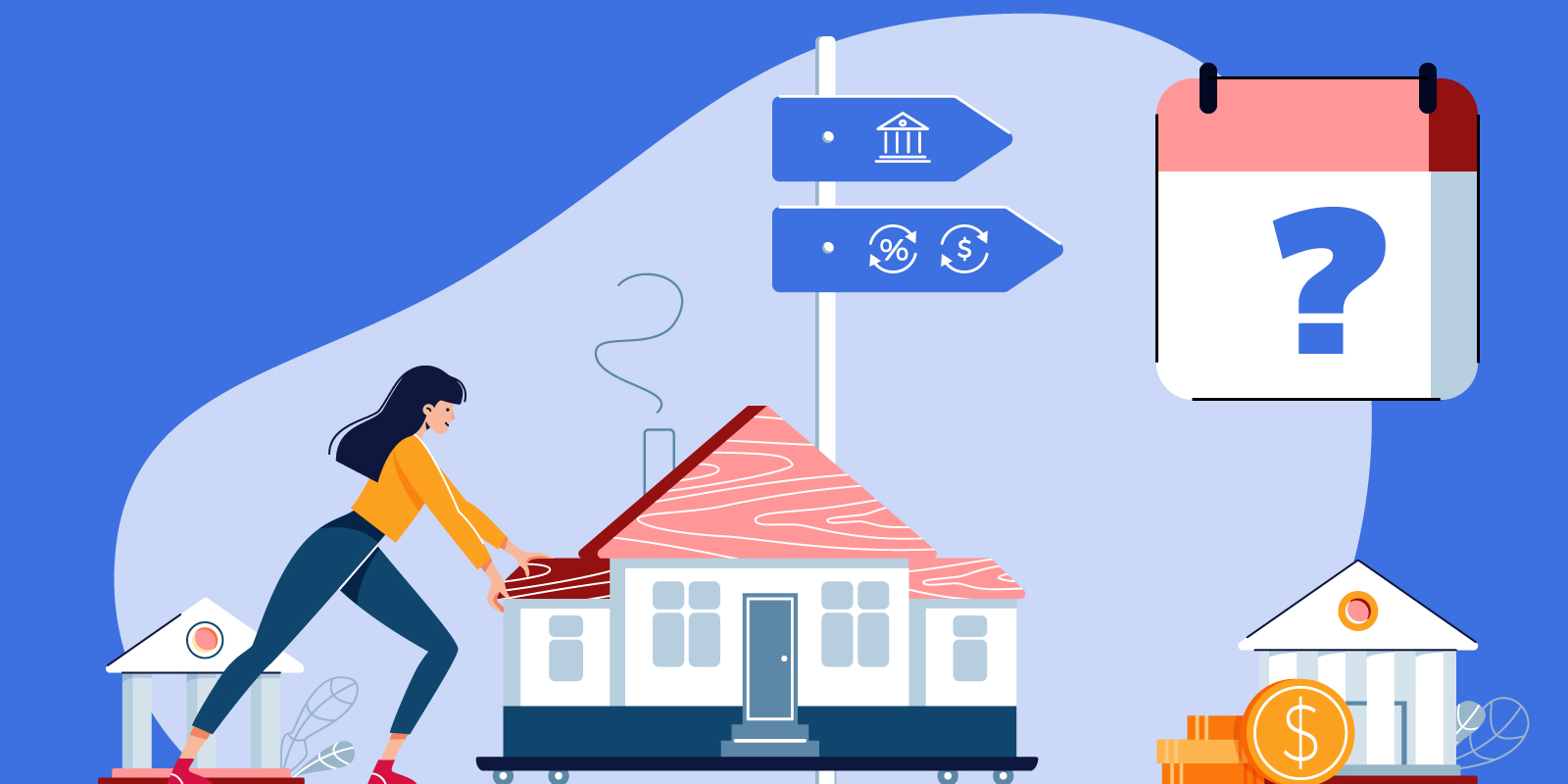If your current mortgage has unfavorable terms, or if you need cash in your pocket, you may be able to do a cash-out refinance. This type of refinancing gives you cash in exchange for committing to a larger mortgage than the one you already have. Read on to learn more about cash-out refinancing and find out if it’s right for you.
What Is Cash-Out Refinancing?
Cash-out refinancing allows you to take advantage of the home equity you’ve built over time. In banking terms, equity refers to the difference between the value of your home and the current principal balance on your existing mortgage. For example, if you owe $400,000 on a home valued at $500,000, you have $100,000 in equity.
Cash-out refinancing makes it possible to convert some or all of this equity into cash, giving you extra funds that you can use for almost any purpose. Many people use the cash to make extensive home repairs, build additions or purchase appliances. You can also use the money to buy a new car, cover a child’s tuition expenses or take a trip around the world. Due to an increase in home values, cash-out refinances made up nearly 42% of all refinanced mortgages in 2021.
How Long Does a Cash-Out Refinance Take?
It used to take about 30 to 45 days for the bank to process your paperwork and schedule a closing, but you should expect to wait longer, thanks to the increasing popularity of cash-out refinances. These days, you can expect it to take 45 to 60 days or even more to complete the whole process. If you need the cash for an urgent expense, such as a medical bill, be sure to give yourself plenty of time to close on the new loan and get the money from your lender.
Why does it take so long? In short, you have to go through the underwriting process before you can close on the loan. Your bank’s underwriter will review your application and supporting documents. They must verify your income, determine how much debt you have and make sure that you meet the bank’s other lending requirements. This takes time, especially now that cash-out refinancing is such a popular option.
Your timeline may also be influenced by the following factors:
- Appraisal: Before you can close on this type of loan, you need to get your home appraised. An appraisal is a professional’s opinion of how much your home is worth. This is an important step in the cash-out refinance process, as it affects the amount of equity you have. If your local appraisers are all booked up, it may take several weeks to complete this step.
- Current Market: In a hot housing market, it may take longer to do a cash-out refinance due to the number of applications each bank needs to process.
- Loan Type: Some cash-out refinance loans take longer to process than others. For example, if you qualify for a government-backed loan, it may take more time to meet the lender’s requirements.
Cash-Out Refinancing vs. Traditional Refinancing

The process of doing a cash-out refinance is similar to the process of a traditional refinance, but each type of refinancing has a different goal. With traditional refinancing, you replace your current mortgage with a brand-new loan. Borrowers typically do this to take advantage of better loan terms, such as lower monthly payments or lower interest rates.
If you decide to do cash-out refinancing, you’ll take out a loan with a principal balance that’s higher than the balance on your current mortgage. After closing, the difference is refunded by the title company. It’s important to know that you may not receive the cash immediately.
If you’re doing a cash-out refinance on your primary residence, you have three business days to cancel the transaction. This is known as the rescission period. Unless you have a personal financial emergency that makes you eligible to waive the rescission period, you won’t get the money until the three days have passed. If you’re doing a cash-out refinance on a vacation home or other property, you’ll get the money immediately.
Why Choose a Cash-Out Refinance?
One of the best reasons to opt for a cash-out refinance is that mortgage rates are typically lower than the rates on other types of loans. If you have the choice between borrowing $20,000 at 5% and $20,000 at 10%, the first option saves you a significant amount of money. Depending on when you do the cash-out refinance, you may also benefit from taking out a loan with a lower interest rate, a fixed interest rate instead of a variable rate or a lower monthly payment. All of these benefits make it easier to manage your finances.
If you served in the military, choosing a cash-out refinance may help you access additional VA benefits. The Department of Veterans Affairs offers this type of loan to Armed Forces, National Guard and Reserve members who meet certain service requirements. If you meet these requirements, you’ll need to obtain a Certificate of Eligibility before shopping around for a VA cash-out refinance loan.
Another benefit of doing this type of loan is that you can take advantage of the recent increase in home values.
At the height of the COVID-19 pandemic, many people wanted to move closer to loved ones or leave crowded urban areas for rural or suburban ones. The demand for homes far exceeded the available supply, driving up prices and causing buyers all over the United States to get into tense bidding wars. If your home increased in value, you now have more equity, allowing you to get more cashback.
How to Qualify for Cash-Out Refinancing
To qualify for refinancing, you need to meet your lender’s minimum credit score requirement. You’ll also have to provide proof of income, meet the lender’s minimum loan-to-value (LTV) ratio and have a debt-to-income (DTI) ratio below the lender’s limit.
Your LTV ratio is the balance of your mortgage compared to the value of your home, while your debt-to-income ratio is your monthly debt payments divided by your gross monthly income. Be prepared to provide copies of your pay stubs, tax returns, bank statements and other documents to show the lender that you’re capable of repaying the loan as agreed. Each lender has different LTV and DTI requirements, so check with your loan officer to determine if you qualify.
Next Steps
If you think a cash-out refinance is the best option for your situation, contact your preferred lender to begin the application process. This type of loan can help you get the cash you need to buy a new furnace, replace a leaky roof or purchase almost anything you want or need.
You might also be interested in: Pros And Cons Of Refinancing Your Home







